This repository is the official PyTorch implementation of our AAAI-2022 paper, in which we propose DiffSinger (for Singing-Voice-Synthesis) and DiffSpeech (for Text-to-Speech).
Besides, more detailed & improved code framework, which contains the implementations of FastSpeech 2, DiffSpeech and our NeurIPS-2021 work PortaSpeech is coming soon ✨ ✨ ✨.
| DiffSinger/DiffSpeech at training | DiffSinger/DiffSpeech at inference |
|---|---|
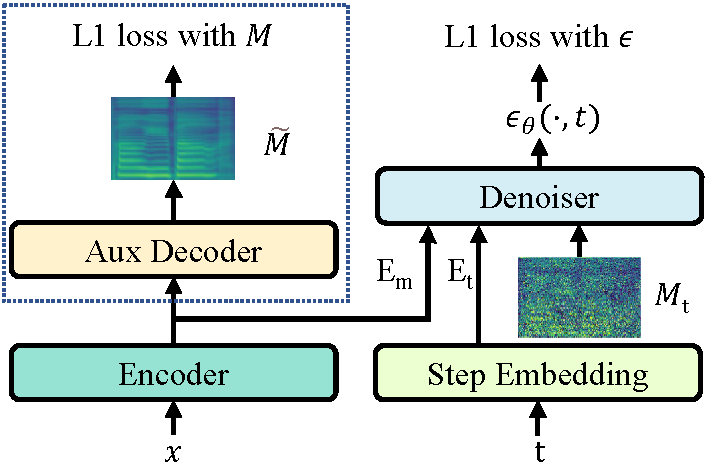 |
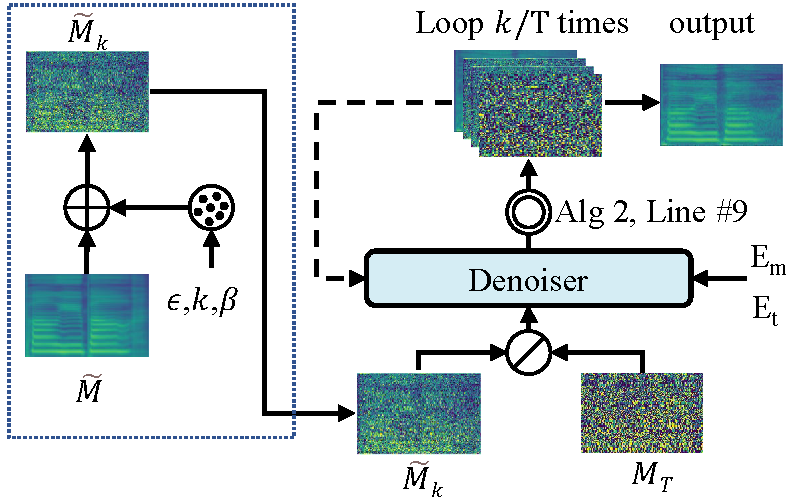 |
🚀 News:
- Dec.01, 2021: DiffSinger was accepted by AAAI-2022.
- Sep.29, 2021: Our recent work
PortaSpeech: Portable and High-Quality Generative Text-to-Speechwas accepted by NeurIPS-2021.
- May.06, 2021: We submitted DiffSinger to Arxiv
.
🎉 🎉 🎉 New features updates:
- Jan.29, 2022: support MIDI version SVS.
- Jan.13, 2022: support SVS, release PopCS dataset.
- Dec.19, 2021: support TTS.
conda create -n your_env_name python=3.8
source activate your_env_name
pip install -r requirements_2080.txt (GPU 2080Ti, CUDA 10.2)
or pip install -r requirements_3090.txt (GPU 3090, CUDA 11.4)a) Download and extract the LJ Speech dataset, then create a link to the dataset folder: ln -s /xxx/LJSpeech-1.1/ data/raw/
b) Download and Unzip the ground-truth duration extracted by MFA: tar -xvf mfa_outputs.tar; mv mfa_outputs data/processed/ljspeech/
c) Run the following scripts to pack the dataset for training/inference.
export PYTHONPATH=.
CUDA_VISIBLE_DEVICES=0 python data_gen/tts/bin/binarize.py --config configs/tts/lj/fs2.yaml
# `data/binary/ljspeech` will be generated.CUDA_VISIBLE_DEVICES=0 python tasks/run.py --config usr/configs/lj_ds_beta6.yaml --exp_name lj_exp1 --resetCUDA_VISIBLE_DEVICES=0 python tasks/run.py --config usr/configs/lj_ds_beta6.yaml --exp_name lj_exp1 --reset --inferWe also provide:
- the pre-trained model of DiffSpeech;
- the pre-trained model of HifiGAN vocoder;
- the individual pre-trained model of FastSpeech 2 for the shallow diffusion mechanism in DiffSpeech;
Remember to put the pre-trained models in checkpoints directory.
- See in apply_form.
- Dataset preview.
a) Download and extract PopCS, then create a link to the dataset folder: ln -s /xxx/popcs/ data/processed/
b) Run the following scripts to pack the dataset for training/inference.
export PYTHONPATH=.
CUDA_VISIBLE_DEVICES=0 python data_gen/tts/bin/binarize.py --config usr/configs/popcs_ds_beta6.yaml
# `data/binary/popcs-pmf0` will be generated.# first run fs2 infer;
CUDA_VISIBLE_DEVICES=0 python tasks/run.py --config usr/configs/popcs_fs2.yaml --exp_name popcs_fs2_pmf0_1230 --reset --infer
# second run ds train;
CUDA_VISIBLE_DEVICES=0 python tasks/run.py --config usr/configs/popcs_ds_beta6_offline.yaml --exp_name popcs_exp2 --reset# first run fs2 infer; if you have already run 'fs2 infer' in above steps, you can skip 'fs2 infer'.
CUDA_VISIBLE_DEVICES=0 python tasks/run.py --config usr/configs/popcs_fs2.yaml --exp_name popcs_fs2_pmf0_1230 --reset --infer
# second run ds infer;
CUDA_VISIBLE_DEVICES=0 python tasks/run.py --config usr/configs/popcs_ds_beta6_offline.yaml --exp_name popcs_exp2 --reset --inferWe also provide:
- the pre-trained model of DiffSinger;
- the pre-trained model of FFT-Singer for the shallow diffusion mechanism in DiffSinger;
- the pre-trained model of HifiGAN-Singing which is specially designed for SVS with NSF mechanism.
Note that:
- the original PWG version vocoder in the paper we used has been put into commercial use, so we provide this HifiGAN version vocoder as a substitute.
- we assume the ground-truth F0 to be given as the pitch information following [1][2][3]. If you want to conduct experiments on MIDI data (with external F0 predictor or joint prediction with spectrograms), you may turn on the pe_enable option. Otherwise, the vocoder with NSF could not work well.
[1] Adversarially trained multi-singer sequence-to-sequence singing synthesizer. Interspeech 2020.
[2] SEQUENCE-TO-SEQUENCE SINGING SYNTHESIS USING THE FEED-FORWARD TRANSFORMER. ICASSP 2020.
[3] DeepSinger : Singing Voice Synthesis with Data Mined From the Web. KDD 2020.
tensorboard --logdir_spec exp_name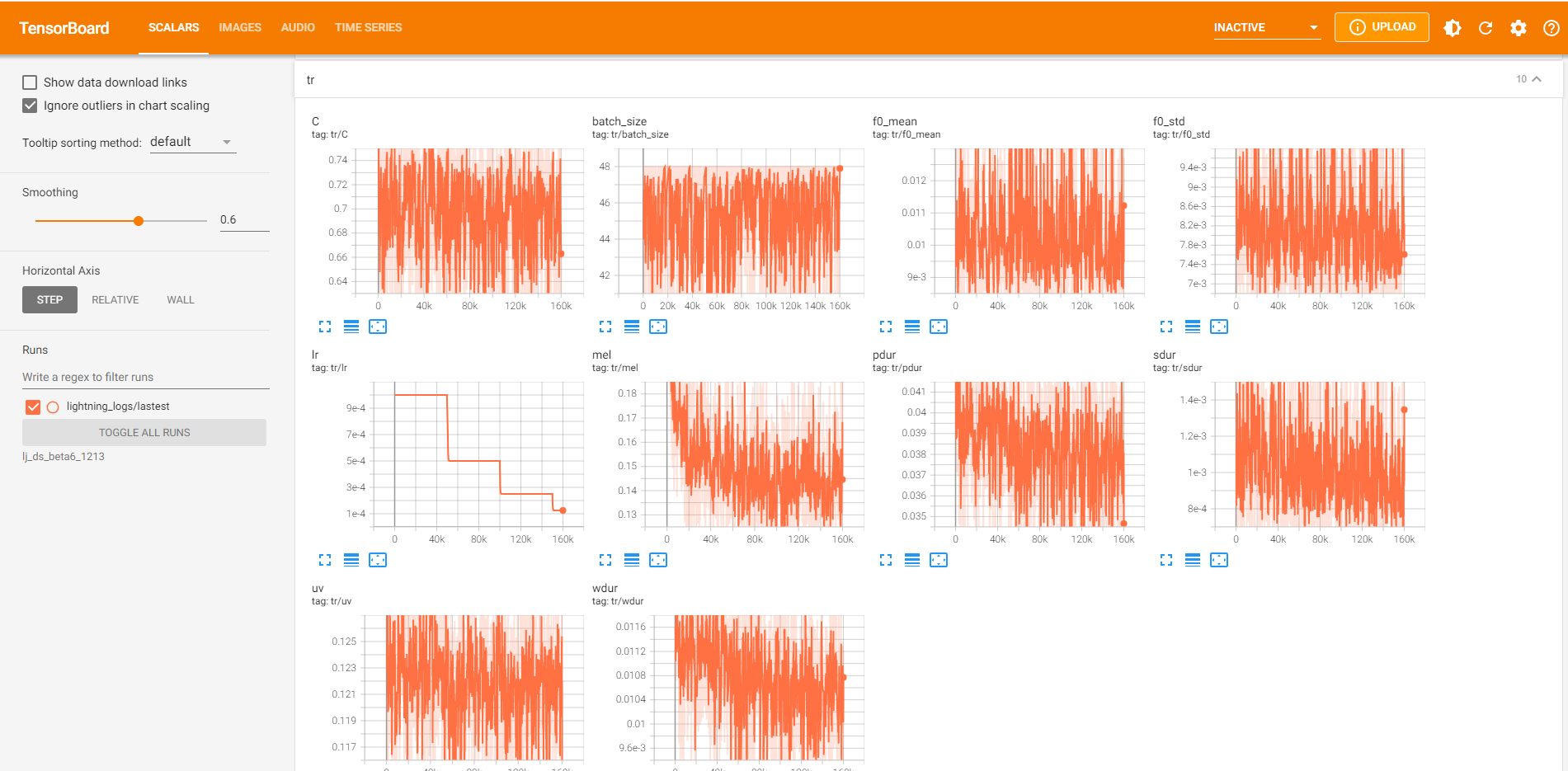 |
Along vertical axis, DiffSpeech: [0-80]; FastSpeech2: [80-160].
| DiffSpeech vs. FastSpeech 2 |
|---|
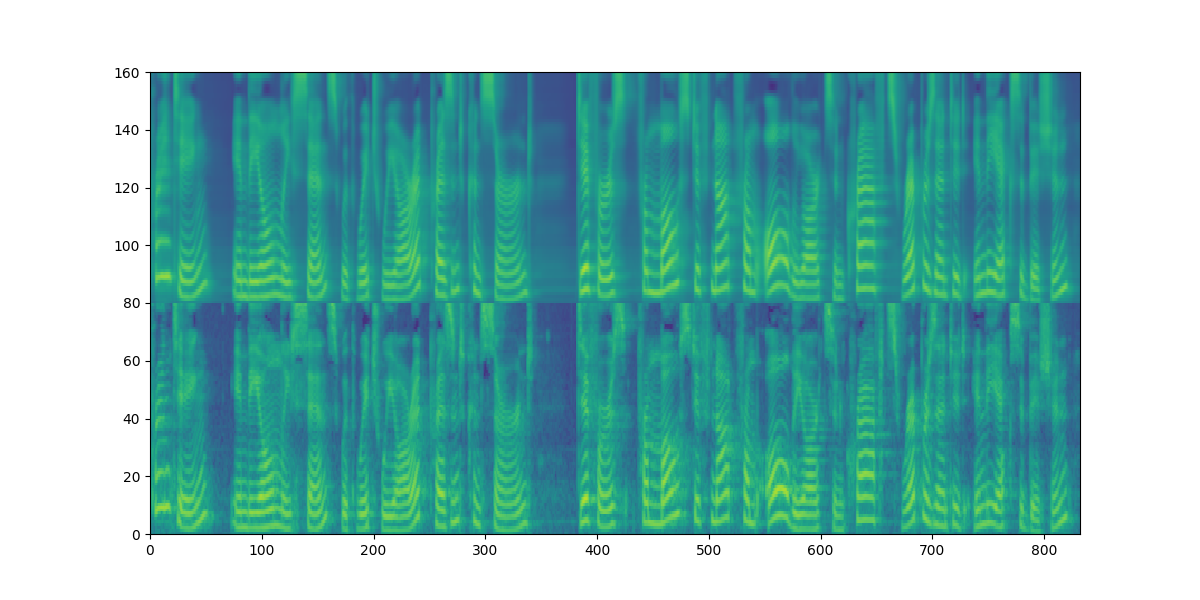 |
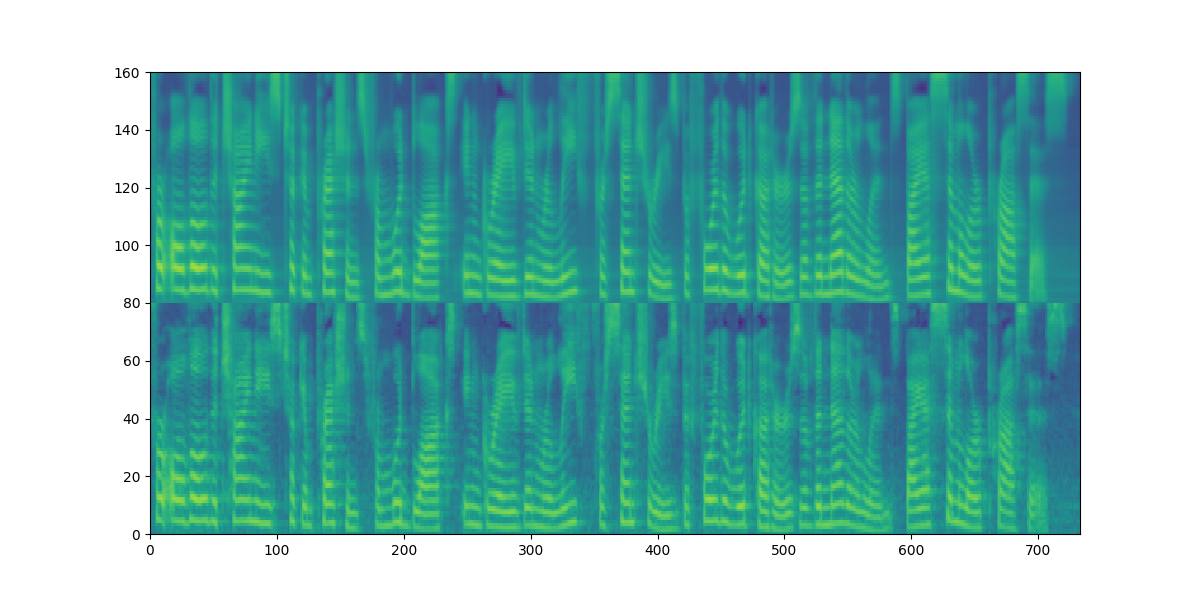 |
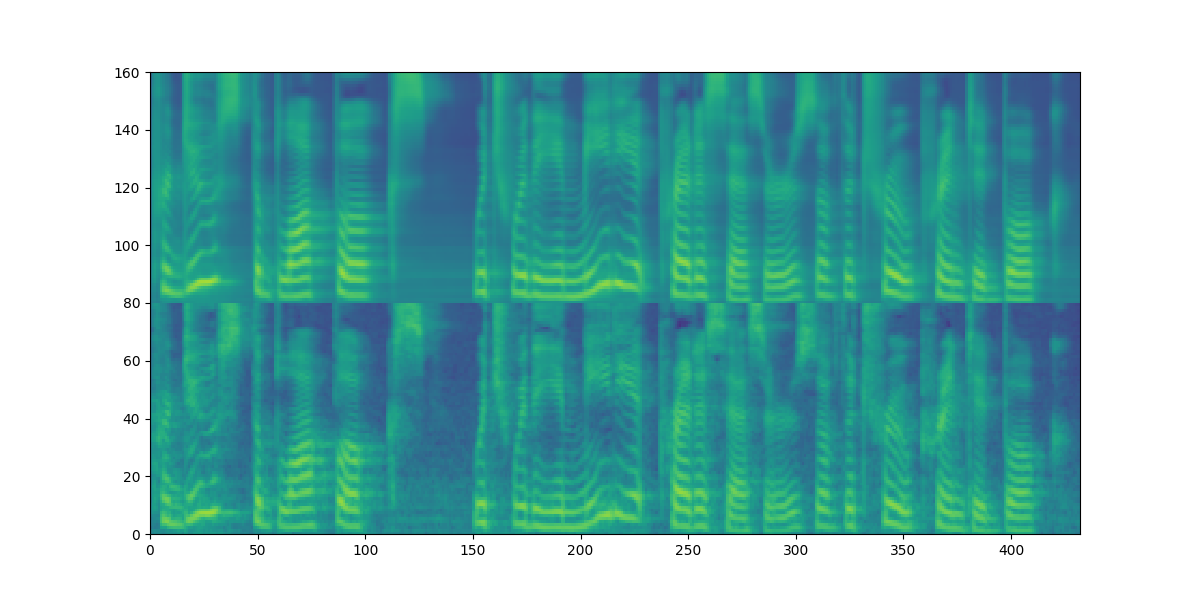 |
Audio samples can be found in our demo page.
We also put part of the audio samples generated by DiffSpeech+HifiGAN (marked as [P]) and GTmel+HifiGAN (marked as [G]) of test set in resources/demos_1213.
(corresponding to the pre-trained model DiffSpeech)
🚀 🚀 🚀 Update:
New singing samples can be found in resources/demos_0112.
@article{liu2021diffsinger,
title={Diffsinger: Singing voice synthesis via shallow diffusion mechanism},
author={Liu, Jinglin and Li, Chengxi and Ren, Yi and Chen, Feiyang and Liu, Peng and Zhao, Zhou},
journal={arXiv preprint arXiv:2105.02446},
volume={2},
year={2021}}
Our codes are based on the following repos:
Also thanks Keon Lee for fast implementation of our work.

